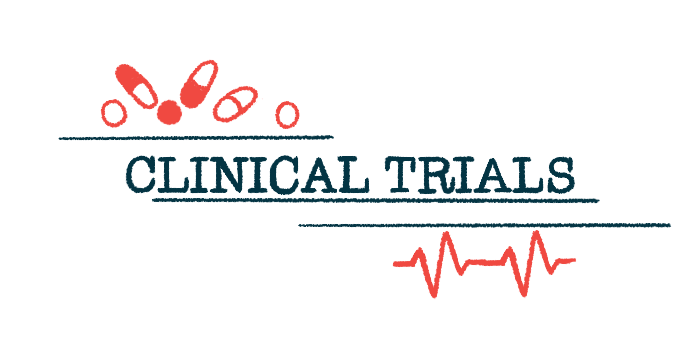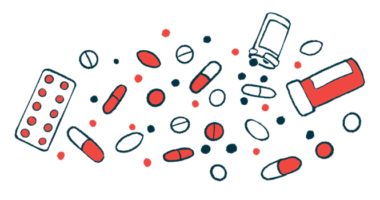Combo PAH treatment shows benefits across patient subgroups
Macitentan/tadalafil tablet led to better blood flow, biomarker reductions

An investigational fixed-dose combination of macitentan and tadalafil in a single tablet (M/T STCT) led to improvements in blood flow and reductions in a biomarker of heart failure for people with pulmonary arterial hypertension (PAH) who were treatment naïve or previously received monotherapies, according to final data from the A DUE clinical trial.
Developer Janssen Pharmaceuticals, now Johnson & Johnson Innovative Medicine, has sought regulatory approval for the oral treatment in the U.S. and Europe. If approved, M/T STCT will become the first single-tablet combination available to PAH patients in the U.S.
“The guiding light of our … research is the goal of transforming PAH into a manageable condition, so we’re constantly looking for ways to improve both clinical outcomes and the treatment experience,” Sean Studer, MD, vice president of medical affairs at Janssen, said in a written Q&A with Pulmonary Hypertension News. “We are excited about the potential role of M/T STCT in helping patients with PAH and look forward to discussions with worldwide regulatory authorities.”
The study, “Randomized Trial of Macitentan/Tadalafil Single-Tablet Combination Therapy for Pulmonary Arterial Hypertension,” was published in the Journal of the American College of Cardiology (JACC).
Both macitentan (sold by Janssen as Opsumit) and tadalafil (Adcirca.) are approved PAH treatments that work in different ways to cause blood vessels to relax and widen. Macitentan blocks endothelin receptors (ERA), while tadalafil inhibits the phosphodiesterase 5 enzyme (PDE5i).
A combination of PDE5i and ERA is recommended by the European Society of Cardiology/European Respiratory Society (ESC/ERS) as a first-line treatment for PAH patients without significant coexisting heart or lung problems.
“Currently, this requires patients to take multiple pills as no single tablet that combines two or more PAH-specific pathways is available for these patients,” Studer noted. “A single-tablet combination has the potential to be an important new option for helping physicians optimize disease management.”
For this reason, Janssen is evaluating the safety and effectiveness of a fixed dose combination of the two medications in a single, once daily oral tablet (10 mg macitentan/40 mg tadalafil). Such a combination tablet is approved in Canada and Argentina for people who were already receiving both therapies, but it’s not approved anywhere for treatment naïve patients or those who might want to switch from a single therapy.
Comparing combo, monotherapies
The Phase 3 A DUE clinical trial (NCT03904693) enrolled 187 adults with PAH who were treatment naïve or had previously been on stable PDE5i or ERA monotherapy and were in World Health Organization (WHO) functional class 2 or 3.
The participants were randomly assigned to a daily dose of the combination therapy (M/T), macitentan alone (10 mg), or tadalafil alone (40 mg), for about four months.
As reported, patients treated with the combination therapy achieved a significant 28-29% reduction in pulmonary vascular resistance (PVR) — a measure of the resistance that must be overcome for blood to flow — as well as a clinically meaningful, but not statistically significant improvement in exercise capacity relative to either individual therapy alone. The trial wasn’t designed to detect differences in exercise capacity, however, Studer said.
The recent publication also indicates that PVR reductions, reflecting improved blood flow, were observed regardless of whether patients had been treatment-naïve before the trial or had received ERA or PDE5i monotherapy.
Currently, this requires patients to take multiple pills as no single tablet that combines two or more PAH-specific pathways is available for these patients. A single-tablet combination has the potential to be an important new option for helping physicians optimize disease management.
Likewise, the combination’s benefits were generally observed regardless of other patient characteristics such as age, sex, race, and WHO functional class.
Changes in other measures of blood flow similarly favored the combination therapy.
Patients in all three groups reported an easing of cardiopulmonary and cardiovascular symptoms, and most didn’t see a WHO functional class worsening during the trial.
Decreases in NT-proBNP, a biomarker of heart failure, were observed across all participants, with those in the M/T STCT group seeing significant decreases compared to either monotherapy.
The safety profile was similar to the known profile of each individual therapy. Certain side effects and those that led to the treatment being discontinued occurred at higher rates with M/T than either individual therapy.
“A single tablet combination has the potential to support initial dual combination therapy and rapid escalation from monotherapy, which may improve functional outcomes and help close the gap from guideline recommendations to clinical practice,” Studer said.
In a podcast associated with the publication, JACC editor-in-chief, Valentin Fuster, MD, PhD, emphasized that while a single combination tablet “may represent a patient-friendly alternative” to taking several pills per day, the clinical efficacy of the two approaches will likely be similar. He said such combinations in any form are not recommended upfront for patients with coexisting cardiac and lung conditions.
Patients who complete A DUE can enroll in an open-label extension phase, where all will continue to receive the combination tablets for two years. The study was funded by Actelion Pharmaceuticals, a Johnson & Johnson subsidiary.








